This post may contain affiliate links. Please read my privacy policy.
Ngoh Hiang - Ngoh Hiang is the Singaporean version of five-spice pork rolls wrapped with beancurd skin. This simple ngoh hiang recipe is great as an entree or appetizer.
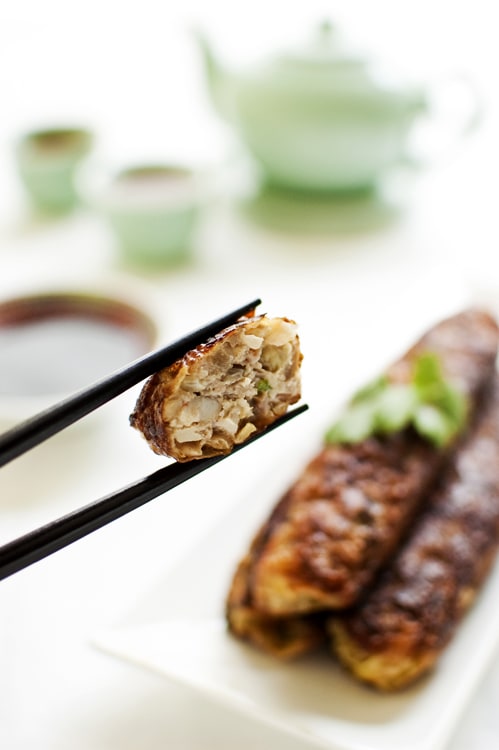
Ngoh Hiang is one of the most requested recipes from my Singaporean readers. Being a Malaysian, I have no idea what ngoh hiang is.
After poking around, I finally realized that ngoh hiang is the local Singaporean name for a similar dish “loh bak” or five-spice pork rolls wrapped with tofu skin.
So, I invited Danielle of Bon Vivant back for another guest post. (Check out her claypot chicken rice recipe.) Please welcome Bon Vivant to Rasa Malaysia again as she shares her mother’s ngoh hiang recipe.
And to all my Singaporean readers, I hope you enjoy this post! Let us know if your family makes the Hokkien version or Teochew version.
These pork rolls are a delicious and dangerous concoction. Named for the Chinese five spice powder that gives the rolls their unique flavor, Ngoh Hiang (五香) is another take on the pork sausage, if you will.
A whole array of ingredients are stirred into a pound of fatty ground pork, which is then seasoned with five spice powder and snugly wrapped in dried beancurd skins.
First steamed, then pan-fried to a crisp, one bite of these juicy chunks is never enough for me as I’d have worked up a massive appetite by the time these rolls hit the table, thanks to the aromas that leak out in the cooking process…
Like any good Chinese dish, these rolls have their sub-cultural variations, depending on whether the cook was of a Teochew or Hokkien dialect.
In my maternal grandfather’s Teochew version, there were shrimp and water chestnuts, but no onions or yam. Before cooking, each roll was tied with string, sectioning out pieces for easy cutting and serving once ready.
In my paternal grandmother’s Hokkien version, however, there were the pork and onions, but no shrimp or water chestnuts. After tasting both versions, my mother, like any curious cook, took it upon herself to fuse the two traditions to produce a pork roll to her taste.
This took years of trial and error, and neverending rounds of scrutiny and questioning before her rolls received the seal of approval from the seasoned palates on both sides of the family.
With a new recipe for utterly addictive pork rolls came a change of cooking traditions: the Hokkien grandmother saw the merits of water chestnuts and started featuring them in her rolls, while the Teochew grandfather slowly came round to adding onions to his.
As you try out this particular recipe, take the liberty to substitute, add or remove ingredients according to your taste – it is, after all, in the spirit of culinary evolution and curiosity that led to this version in the first place!
Frequently Asked Questions
This recipe is 333 calories per serving.
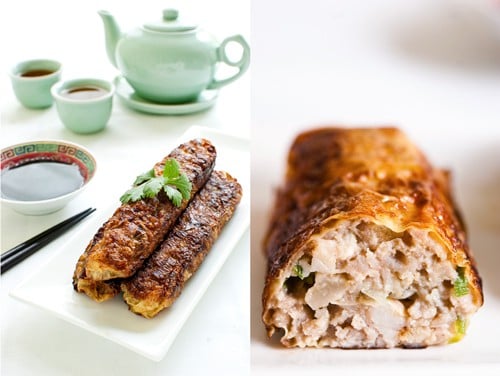
What To Serve With Ngoh Hiang
For a wholesome meal and easy weeknight dinner, I recommend the following recipes.
I hope you enjoy this post as much as I do. If you try my recipe, please leave a comment and consider giving it a 5-star rating. For more easy and delicious recipes, explore my Recipe Index, and stay updated by subscribing to my newsletter and following me on Facebook, Pinterest, and Instagram for new updates.
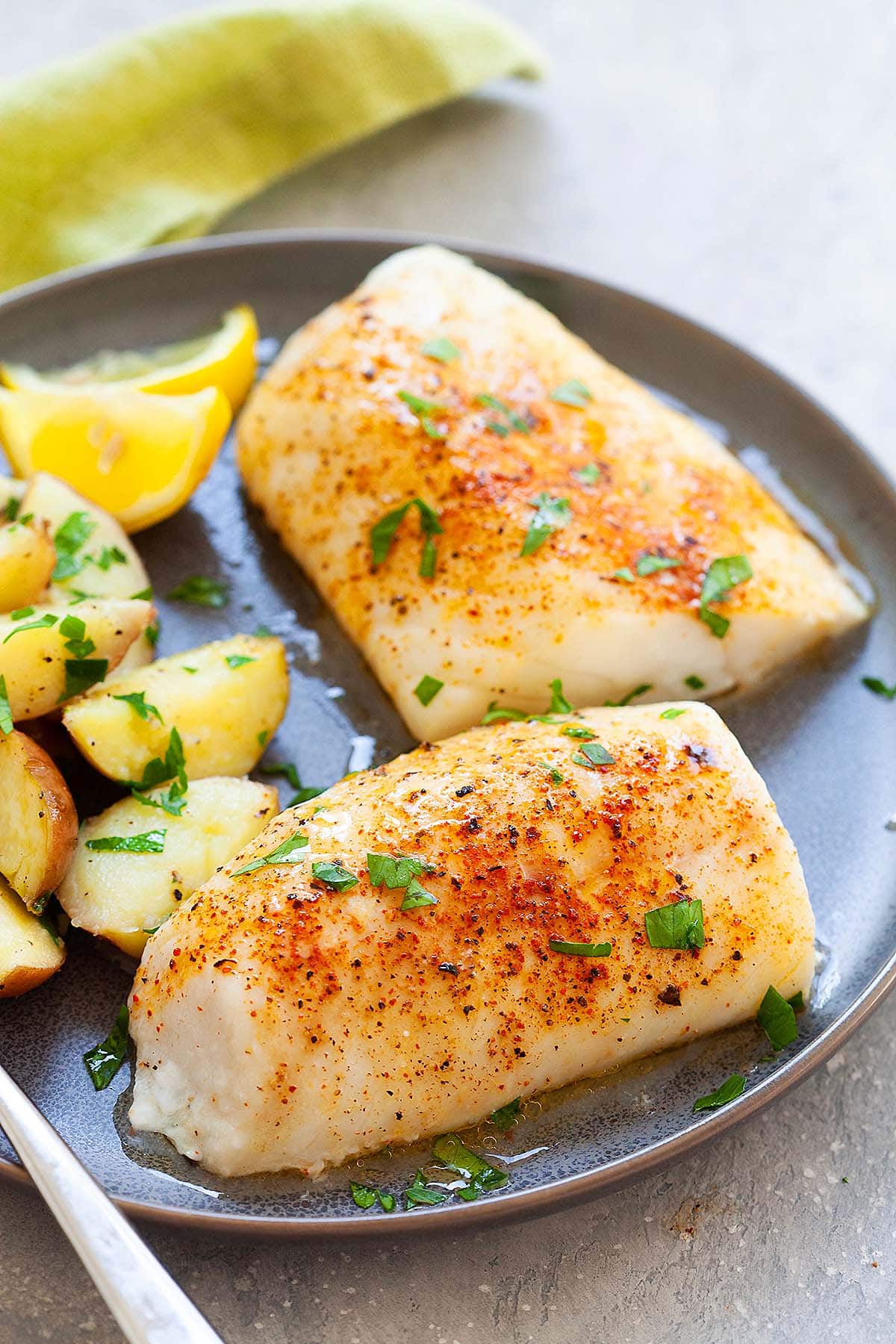
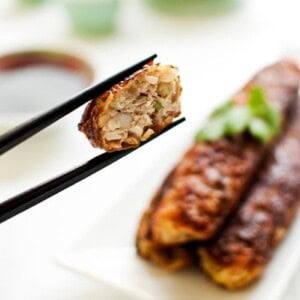
Ngoh Hiang
Ingredients
- 1 pound (500g) minced pork, preferably the shoulder for its higher fat content
- ½ pound (250g) fresh shrimp, shelled and minced
- 1 large egg, lightly beaten
- 2 tablespoons light soy sauce
- 1 teaspoon fine sea salt
- 1 teaspoon ground white pepper
- 1 teaspoon five-spice powder
- 10 – 12 water chestnuts, washed, peeled and smashed with a pestle
- 3 green onions, finely chopped
- ½ yellow onion, minced
- 3 tablespoons self-rising flour
- Dried soya bean skin, available in frozen, ½ pound packs from Chinese grocery stores, cut into 4 by 6-inch rectangles
- Corn oil
- Sweet dark soya sauce or Kecap Manis , for dipping
Instructions
- Mix the pork and minced shrimp in a large bowl, then add the egg and stir to combine. In a separate bowl, stir together the soy sauce, salt, white pepper, and five-spice powder until smooth, then add it to the pork and shrimp mixture.
- Stir in the water chestnuts, green onions, and yellow onion, mixing to distribute the ingredients evenly. Finally, sift in the flour and mix until no traces of flour remain.
- Lay out the prepared skins on your work surface. Arrange a heaping tablespoon of the pork mixture along the longer edge of the skin, leaving a ½-inch gap from the edges. Shape the meat into a slim sausage, approximately 1 inch (2.5 cm) tall and 1½ inches (3.5 cm) wide. Add more pork if needed.
- After shaping the meat, roll the skin starting from the edge closest to you, tucking in the side edges as you go. Roll until the meat is fully encased within the skin, then place it seam side down on a plate. Repeat until you’ve used up all the pork. (For a helpful step-by-step visual, check out The Little Teochew's images of how to roll ngoh hiang check out at the end of this post.)
- Lightly grease a steamer tray and steam the rolls for 8 to 10 minutes, until the skins turn translucent and the rolls feel firm. Remove them and set aside on wire racks to cool. At this point, you can divide the rolls into batches and freeze them in plastic wrap for up to 3 months. To cook, defrost the rolls in a 350°F (180°C) oven for 10 minutes before frying.
- To finish the rolls, heat a non-stick saucepan large enough to comfortably hold 2 to 3 rolls, and add enough oil to thinly cover the surface of the pan.
- Add the rolls one at a time—cooking a maximum of 3 at a time to avoid overcrowding the pan—and fry on medium-high heat until the skins turn a crisp dark brown. Allow them to cool on paper towels or a wire rack before slicing and serving. Wipe down the pan with paper towels after each batch before cooking the next.
- Slice the rolls into 1-inch pieces and serve warm or at room temperature with the dipping sauce.
Nutrition
Nutrition information is automatically calculated, so should only be used as an approximation.
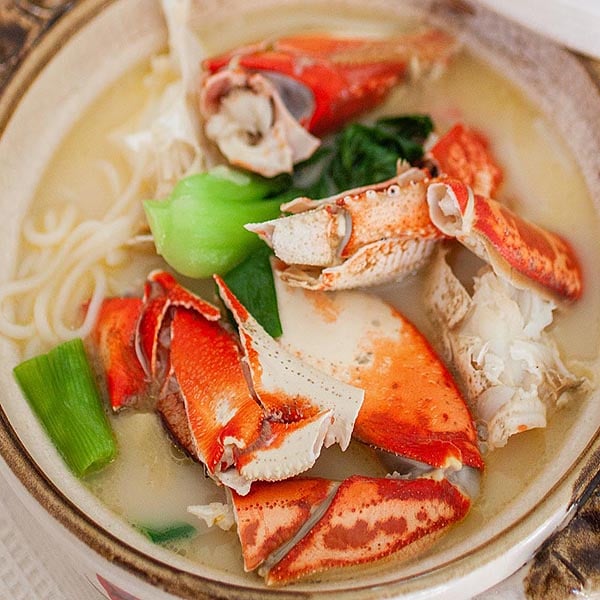
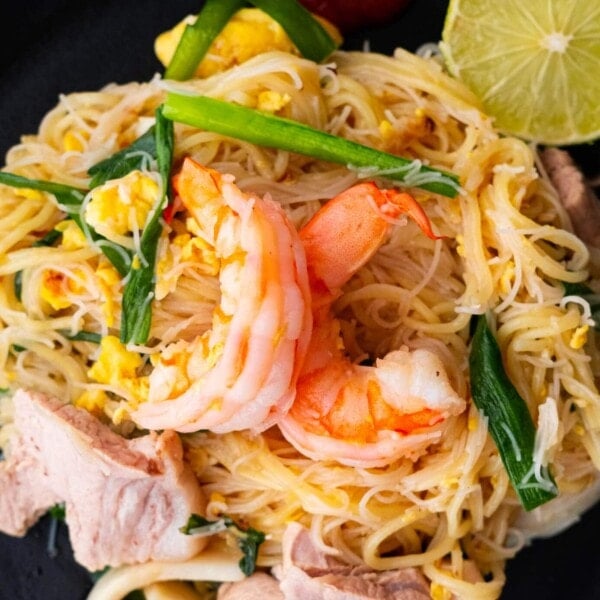
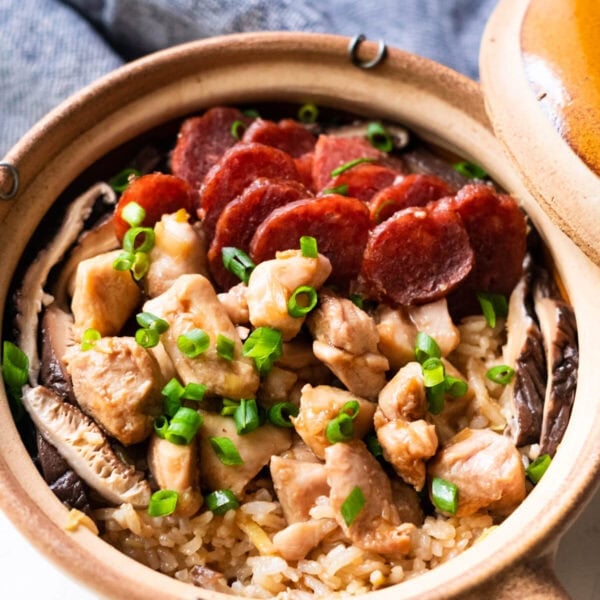
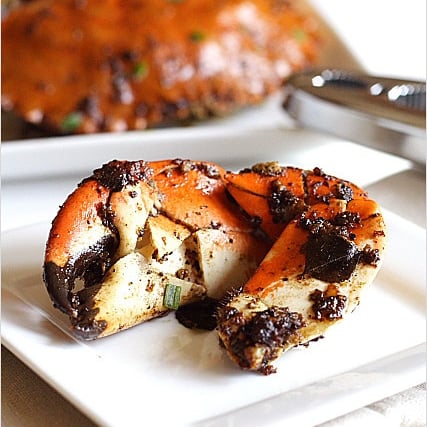






May I know what is the name for dipping the ngoh hiang? the sweet sauce in the earlier day, the sweet pink sauce, I think mix with some starches, a bit sticky, please advise, thanks
I think it’s called tee chio.
Can you use canned water chestnuts or do you recommend trying to find fresh?
Canned is fine.
Hi Bee, Salam Sejahtera,
I love eating this and always buy the frozen one (halal). If I wanted to make myself and since a Muslim cannot eat pork, what is the good substitute? Chicken or beef?
Chicken.
Hi, do you wipe down or dip the bean curd skin in water before you wrap the rolls? I have tried this recipe before but the dried bean curd skin is super salty – wondering how to get rid of most of the salt. Wiping the sheet down does not remove that much salt but dipping in water makes the skin fragile and tear very easily – hope you can help me sort this problem out so that I can delicious home made ngoh hiang in Singapore!